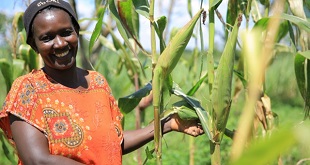Among respondents age 15-49, a larger proportion of men (27%) than women (15%) had never been tested. Most of those who had been tested said that they had received the results of the last test they took.
Overall, 83% of women and 70% of men had ever been tested and had received the results of their last test. But the likelihood of having ever had an HIV test and receiving the results of the last test was lowest in the 15-19 age group (54% of women and 44% of men).
It was also lowest among respondents who had never married and had never had sex (38% of women and 40% of men), and among men in Karamoja sub-region (39%). Fifty five percent of women and 47% of men age 15-49 had been tested in the 12-month period preceding the survey and had been told the results of the last test they took.
Youth and HIV
When it comes to having comprehensive facts about HIV prevention, 46% of young women and 45% of young men have comprehensive knowledge about HIV.
Comprehensive knowledge is defined as knowing that both condom use and limiting sexual intercourse to one uninfected partner are HIV prevention methods, knowing that a healthy-looking person can have HIV, and rejecting the two most common local misconceptions about HIV transmission— that HIV can be transmitted by mosquito bites or by sharing food with a person who has HIV.
Langi have most peaceful sex life, Balokole the worst
Sexual violence, which describes the tendency of some men and women to either get or attempt to get sex by force or to traffic other people for sexual purposes is a big problem in Uganda.
According to the survey, one in five women age 15-49 (22%) reported having experienced sexual violence at some point. The figure for men who have suffered sexual violence is lower (8%).
Based on ethnicity Basoga women suffer the most sexual violence at 27%, followed by the Bakiga and Lugbara at 25%.
The women who enjoys most sexually peaceful life are the Acholi where only 9.6% report suffering sexual violence. These are followed by the Banyoro women who report on 18.1% sexual violence and Langi at 19%.
Among the men, the Batooro men suffer the most sexual violence at 13% followed by the Bakonzo at 12% and Baganda and Banyakore at 10%.
The men who suffer the least sexual violence are the Bagisu at 3.7%, Lugbara 4.6% and Langi at 4.8%. The statistics for men and women show that people in the Lango sub-region report having the most peaceful sex life in Uganda.
Women age 15-19 are less likely (5%) to report recent experience of sexual violence than older women (13-16%). Women in urban areas (9%), women in Acholi sub-region (5%), and never married women (1%) are also less likely than other women to report recent experience of sexual violence.
Among religions, Pentecostals or born-again Christians (25.3%) have ever experienced sexual violence followed by the Anglicans (22.1%). But in the last 12 months, Anglicans have experienced the most sexual violence (13.7%) followed by Pentecostals (13.1%).
****
editor@independent.co.ug
 The Independent Uganda: You get the Truth we Pay the Price
The Independent Uganda: You get the Truth we Pay the Price




wow!! pretty informative article.I didn’t know that Uganda has that worst situation in sex life.But one thing is positive about having less baby comparing to the number of previous years.
That’s how it is. Diversity in all ways. How is it in your country?